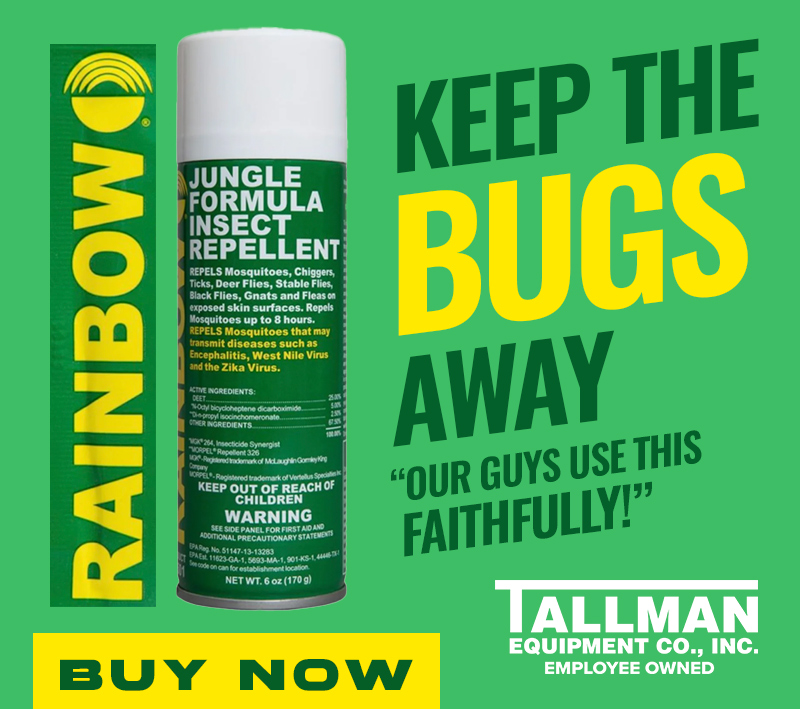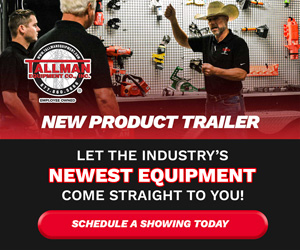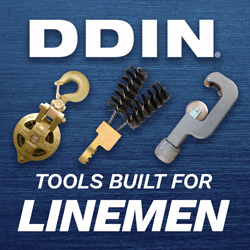Keeping the power running to homes, businesses, and hospitals is a 24/7 job. When the power goes out, it’s a lineman who climbs a pole or clambers underground to restore it. Fixing high-voltage lines in freezing rain and blistering heat demands tough lineman tools and gear you can trust. So, before you prove to everyone you are the right stuff, you need to show up with the right stuff.
If you’re feeling overwhelmed by all the supplies a lineman needs to do the job, you’re not alone. Every newbie feels the same way. But don’t worry, we break it down for you below. At Tallman Equipment, we build our own gear and also partner with leading manufacturers to supply lineman with the tools they need to get the job done.
Gear up with the everyday lineman tools list.
No two days look the same for a lineman. One day you’re scurrying up a utility pole in someone’s backyard to work on a live high-voltage line. The next, you’re in a truck bucket at the corner of First and Main restoring power to the grid. Whatever comes your way, make sure most, if not all, of what’s listed here is handy.
| The Everyday Lineman Tool & Gear List | |
| 🗹 Bolt cutters
🗹 Crimping tools 🗹 Hammer 🗹 Knife 🗹 Measuring tape and ruler 🗹 Set of Pliers 🗹 Needle nose and slip joint pliers |
🗹 Ratchets
🗹 Screwdrivers 🗹 Sockets 🗹 Voltmeter 🗹 Wire cutters 🗹 Wire-stripping tools 🗹 Wrenches |
Yeah, it looks like a lot. That’s why you’ll also need a lineman bag, bucket, or board to haul it all in, which we cover below. Tallman Equipment supplies tough canvas and vinyl bags that hold up under every condition.
Specialized lineman tools and gear to get you home safely, every day.
A lineman’s job is full of hazards. That’s why you need to worry about safety at every turn. From insulated tools and clothing to climbing gear and more, everything you use or wear should protect you from shock and falls.
Sometimes, you can rely on the utility you’re working for or contracting with to provide you with the specialized gear you’ll need. But not always. These are just a few items to consider.
Boots – The right boot depends on the situation as well as OSHA guidelines. If you’re climbing a metal pole, you’ll need a non-conductive pair of Dielectric or Electrical Hazard Boots. For wood poles, you’ll want a taller boot to protect your legs from the wood.
Hard Hat – You’re probably no stranger to hard hats. But for starters, you’ll want a no-nonsense, everyday lineman hard hat with a full-brim that meets specifications, like this one from Tallman.
Hard Hat Light – A hard hat light is indispensable for those nighttime calls.
Climbing Belt and Harness – There are a ton of options for both of these items. Both are essential and musts for pole climbing and above ground linework. You’ll want to consider materials and comfort before you buy. A good place to start is here for belts and here for harnesses.
Gloves – Not just any ordinary gloves, but insulated to protect you from shock or burns.
Climbers – AKA gaffs, irons, and spikes. It’s what you use to get up the pole safely.
Hot stick – An insulated pole with interchangeable tools that go on the end to enable work on live-lines while protecting you from electric shock or burns.
Lineman’s Bag – A heavy-duty canvas or vinyl bag that holds all your tools. A lineman’s bucket is also available. You can either haul it up with you or attach it to the truck bucket.
Lineman’s Board – Another heavy-duty piece of gear that holds your tools. Typically, a board is made of canvas or vinyl and attaches flat to the truck bucket for easy access.
Pole Climbing System – Typically, a rope and lanyard assembly. To safely climb a pole, the lineman attaches to the system which wraps around the pole. Designed to restrict a fall and protect the lineman, some of the most sought after are the EZSqueeze, SuperSqueeze, or TreeSqueeze, all manufactured by Buckingham and distributed through Tallman.
Climbing Pads – Adding pads to your climbers can save your lower legs and shins from pain and stress. Fortunately, there are a number of pad types to choose from based on your preference, from the convenient velcro hook and loop to “C,” “L,” “T,” and more. Every lineman has his own preferences, so look before you buy.
Keep safety in mind
If you’re new to shopping for lineman tools, simply follow one rule when buying gear. Make sure it’s designed, built, and tested for the demanding job of a lineman. For example, lineman pliers have rubber grips covering the handles for added protection from electrical shock. A pair of old pliers from the garage won’t cut it.
The same goes for protective grounding. Don’t skimp. A high-quality cable system called a ground set will safely redirect the electrical current to the ground and bypass yours truly. Expert construction and testing are essential to ensuring ground sets meet exacting standards. Tallman builds and tests its own grounds and jumpers, then labels them with the date of the test and a unique serial number for verification.
For the best tools for linemen, trust Tallman
As an employee-owned company, we understand what it takes to take care of each other. That’s why Tallman Equipment Company only builds, repairs, and sells the very best lineman tools, gear, and equipment. For years, linemen have turned to Tallman to keep them equipped and get them home safely. If you’re ready to power up your new life as a lineman, check us out.







0 Comments